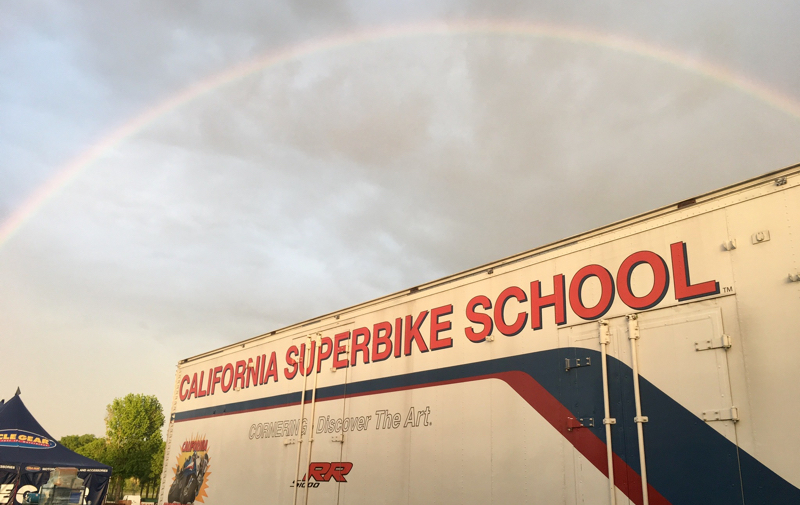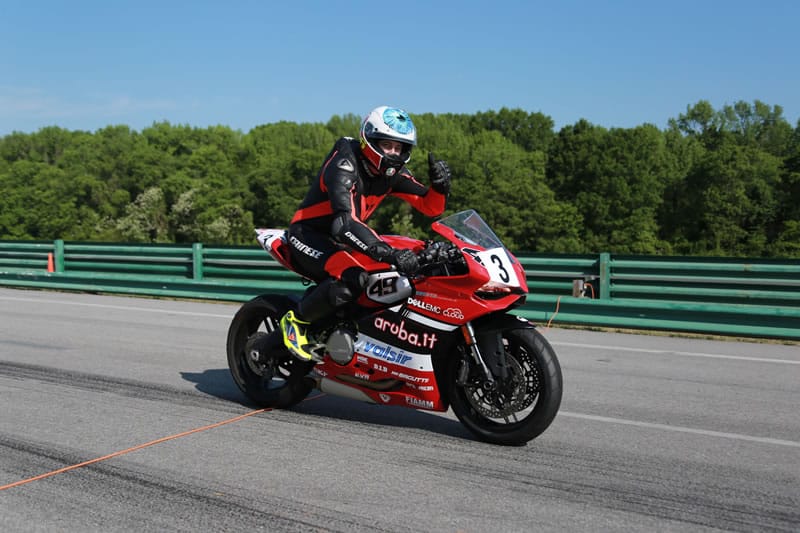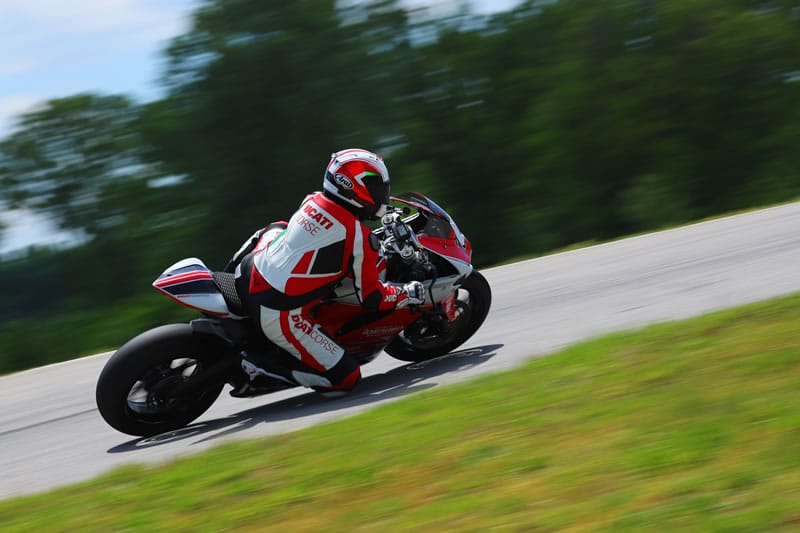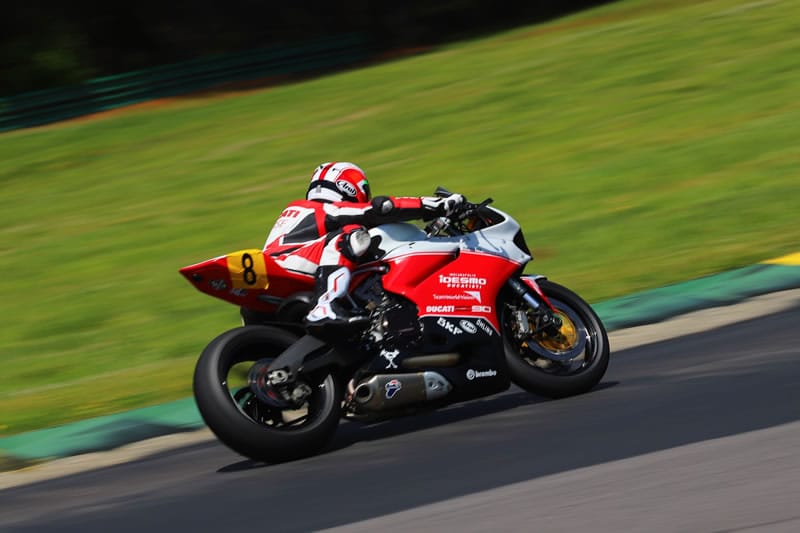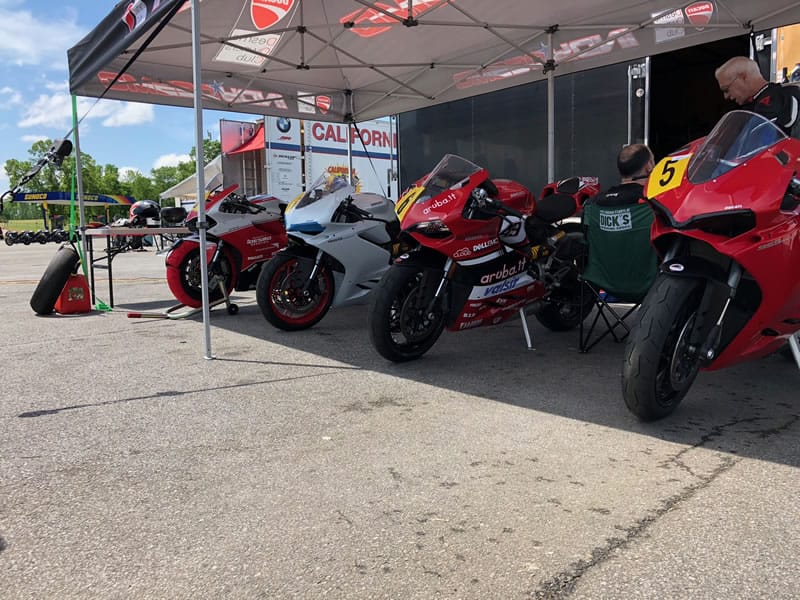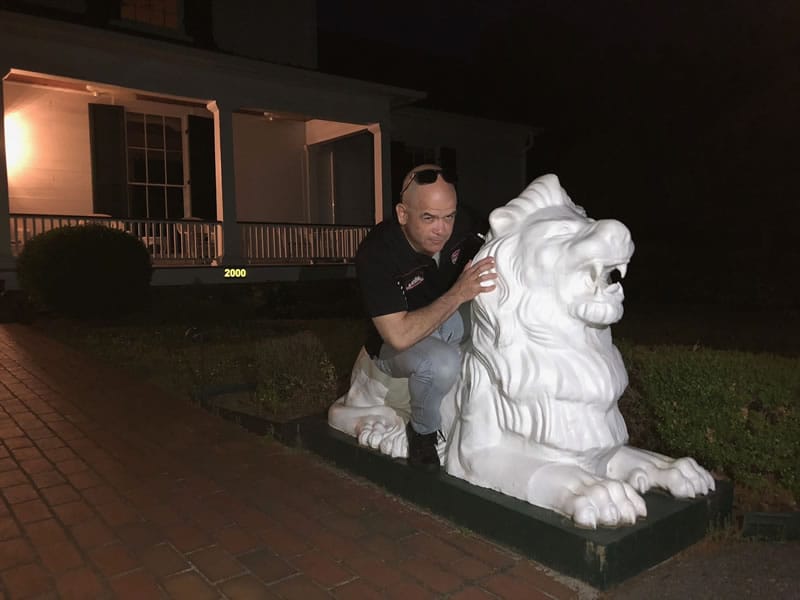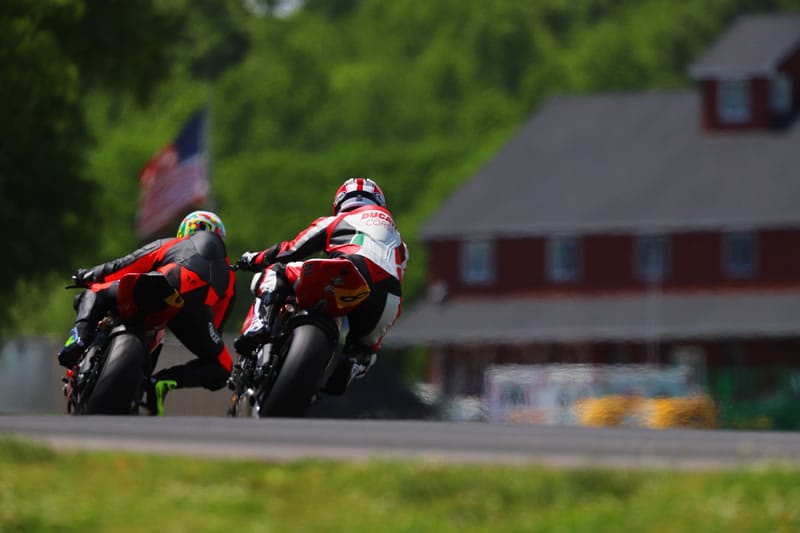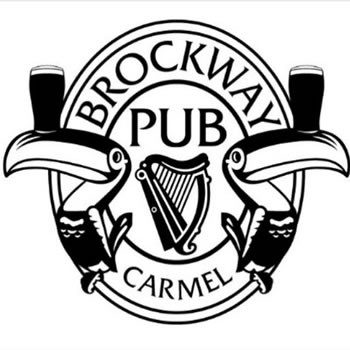“Once the throttle is cracked on, it is rolled on evenly, smoothly, and consistently throughout the remainder of the turn.” Keith Code, California Superbike School
Words of riding wisdom, like those quoted above, were common features of IDesmo’s recent experience with the California Superbike School (CSS) held at Virginia International Raceway. Four Indiana boys of IDesmo went on an adventure of Moto-learning recently, seeking to master the art of the corner. Our professor was none other than Keith Code himself, along with his dynamic team of professional rider coaches, one of whom had just won the MotoAmerica race the day prior to our arrival. In business for 38 years, California Superbike School is well established as a credible organization of rider education and probably the first US-based company to offer organized motorcycle performance learning.
Our journey began with logistics planning, handled almost exclusively by our own Nicholas Dibbs, a well-known graduate of the school. With first-name recognition among the entire CSS staff, Nicholas was able to meticulously plan a flawless 2-day course that included trackside lodging at the famed VIR. This planning occurred months in advance, as slots for this course fill up fast.
Once the registrations were completed and the reservations made, the Panigale Posse loaded their bikes onto the IDesmo trailer in early May and our 10-hour road trip departed for Virginia. Our road master was the President himself, Greg McDaniel, who heroically hauled the four of us single-handedly up and over the Smokey’s, through the rain, and finally to the track.
Once there, we all marveled at this 2.25 mile road course that offers fantastic elevation changes, a kinked straightaway, and gorgeous Virginia scenery – and one more thing: trackside lodging. The luxury of walking from your bed to the morning briefing and your awaiting pit is an experience that we highly recommend! And opening your door in the early morning overlooking a foggy front straightaway as the sun rises is a sight to behold.
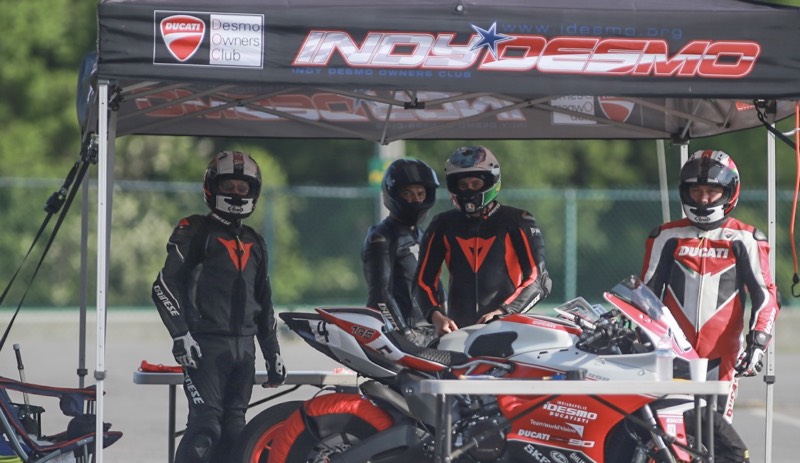
As for the course itself, well, it should come as no surprise that our collective reflection was quite positive. 38 years of training refinement should naturally result in a high level of program and coaching virtuosity, and the CSS method deserves high marks. Our schedule included both level 1 and level 2 curriculums over 2 full days of track work and classroom instruction. CSS offers a total of 4 levels, each with specific lesson plans that progress from one skill to the next. Level 3 deals primarily with body position and includes video playback, while level 4 is rider-centric, allowing the rider and coach to create unique coursework depending on the individual rider’s need. Each level is a day long, and you must begin at level 1. Riders of any skill level are welcome, as long as you have some riding experience. Track experience is not required.
During level 1, five specific lessons are taught, one at a time. These include: throttle control, turn points, steering, rider input, and the 2 step drill. On day two, five new skills are covered, including reference points, the 3 step, wide view, transitions, and braking. As you can imagine, the CSS method places a heavy emphasis on the importance of vision. This should not be a surprise, as this particular skill is often regarded among many riding schools as a foundational skill set that must be continuously practiced. Ken Hill, another well-known track coach, often talks about developing vision and its dominant position in what he refers to as the “order of the sport” and how other professions prepare similarly. Fighter pilots, professional athletes, Special Forces operators and other hi-kinetic occupations all have a need for highly developed optic skills. Safe motorcycling, at any level, requires the same focus on visual precision. The tips offered during this course can be easily applied on the street, and even in the off season while driving a car. Daily practice is essential.
And it’s important to note that the importance of visual efficiency applies equally to all riders, not just those on sport bikes at the track. While it might seem that a company named California Superbike School would cater exclusively to sport bike riders, the skills practiced apply to all riders, on track or on street. In fact, there were more than a few adventure and touring bikes among us, and the skills covered during the two days of coursework applied to everyone equally.
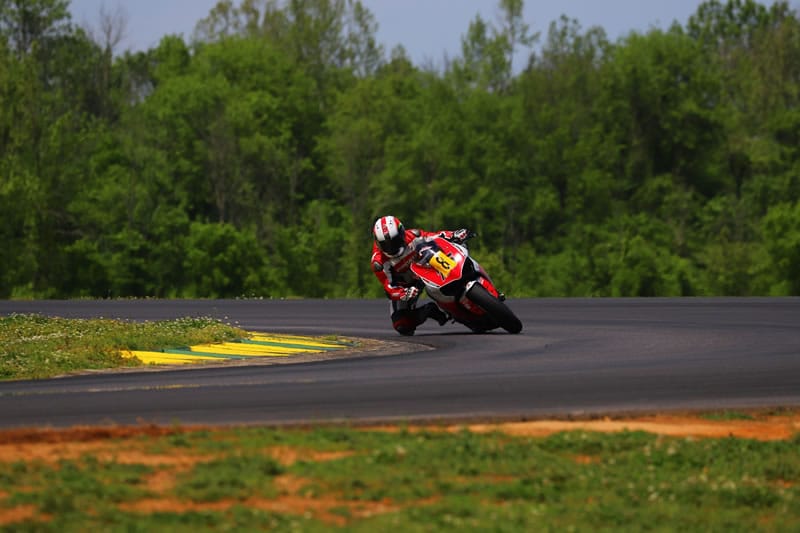
And while on the topic of bike models, another great feature of this particular organization is that, for most of their courses, you are offered the option of either bringing your own bike or, for a slightly higher fee, renting a bike from their fleet of BMW 1000R’s. For every course, CSS brings 2 semi’s with gear rental, food and coffee, and 25 new BMW sport bikes. Most riding schools are too small to offer this feature, thus requiring you to haul your own bike to whatever track the course will be held. The beauty of the CSS program is this option of just showing up, swinging a leg over their bike (which has already been prepared by their staff of mechanics) and running your laps. No tech inspection, no need for taping up mirrors and lights, and no worries about tires. Of-course, the downside is the shame you’ll feel for touching a beemer…just don’t tell Bill!
However, considering the fact that CSS offers courses in Vegas, Laguna Seca, Barber, and other travel-worthy venues, the bike rental feature is an option to be considered, especially if hauling your own bike is not practical. The education you’ll receive will make you forget your momentary bout of brand shame. Mostly.
In summary, CSS offers an affordable, effective, and welcoming learning environment for riders of all skill levels. They are organized, friendly, and eager to help you improve. With a 3-1 student to teacher ratio, the attention you receive is invaluable, and the quality of feedback given is impressive. These are very high caliber riders who have been developed, to CSS’s credit, into high caliber teachers. For the money, this course is hard to beat.
It is IDesmo’s goal to continually promote quality ridership among our members. This requires a continuous commitment to improvement by our entire club. If attending a course like this or others that are available are not in your immediate future, we encourage you to seek out other ways to develop your skill set. CSS offers several books and videos online that contains their general program, and of course other credible organizations do as well. Knowledge is Power!
Article written by Vincent Cascella – iDesmo Member Club Secretary

